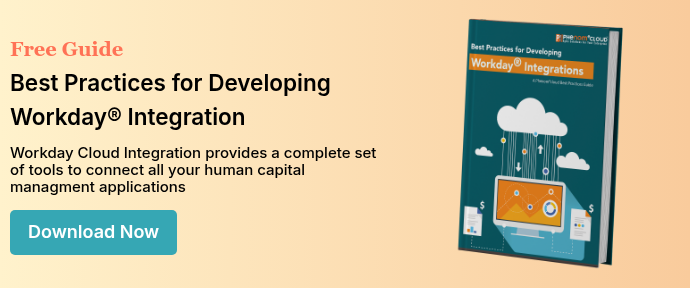
In the early days of cloud talent management, data integration was a single data feed from the system of record. The process was simple. The customer IT team used SQL and a stored procedure to create and send an encrypted file using SFTP. We reversed the process at the other end.
Talent management operated as an entity separate from other business functions. We were rarely asked to export information from talent management to other platforms.
Integration Explosion
What has changed? Almost everything.
- Talent management suites expanded and grew in sophistication. Vendors who began their development in performance and goals evolved into succession planning, compensation, training and development, and eventually into core HR processes. Learning management system vendors expanded into performance and recruiting. Recruiting vendors moved into performance and learning.
- Ancillary services moved onto cloud platforms, creating a demand for more integration. A talent management implementation now requires integration with an assessment vendor, a background check provider, a document signing application, E-Verify, and regulatory agencies.
- Companies began connecting their platforms to their supply chain vendors, logistics, and distribution channels, requiring still more integrations.
- Many companies pursue a best of breed (BoB) strategy instead of complete functional suites. It created a demand for integration between cloud services, each of them with a different data structure. It seems every day a new specialized product or service arises that pushes companies toward BoB.
Data Avalanche
About five years ago business leaders began to see the value of integrating all the disparate data streams into analysis tools to make better business decisions. Big Data was born.
We now have the need to manage many dynamic streams of information from many sources: databases, applications, web pages, mobile devices, robots, and the entire Internet of Things. The skill set for building a single integration is ubiquitous, and when the need arises in an enterprise, the quick and easy solution is to rely on SQL and stored procedures, usually scheduled to run overnight. But that doesn’t meet the needs of today’s fast-moving business, and it creates the problem of managing dozens of one-off integrations.
The demand for integration and the need to aggregate and manipulate both structured and unstructured data gave birth to iPaaS (integration platform as a service). Companies like MuleSoft, Dell Boomi, and Informatica have stepped in to fill the gap.
Strategic Approach to Data and Integrations
Successful data management requires unified data governance and an integration strategy – and that requires a new skill set. One person can develop a single point integration in a very short time. Managing dozens of integrations takes a different type of thinking.
How do we get from here to there? Where is there?
We can make some recommendations based on our experience in integration and analytics.
- Recognize that data management and integrations are a business problem that requires a business strategy. It is not just an IT task. Treat your data as a strategic asset.
- Acquire the skill set needed to manage enterprise data, whether you build it internally or partner with experts. This includes not only the strategic thinking and data management skills to organize the effort, but the skills to deploy and use supporting technology. Recruiting a Chief Data Officer may be prudent.
- If possible, deploy an agile data integration tool with functions for both business and technical people.
- Instead of treating every integration as a single event, create reusable pre-built methods and procedures.
- Mandate every new software acquisition and every new data stream, no matter how small, into the data strategy.
Your data is a strategic asset. Used well, it will help propel your organization into a successful future. We hope this discussion gets you started on the path to a well-managed strategic data and integration plan.
PhenomᵉCloud is a full-service technology company dedicated to helping clients solve business problems, improve the capability of their people, and achieve better results.


Leave a Comment